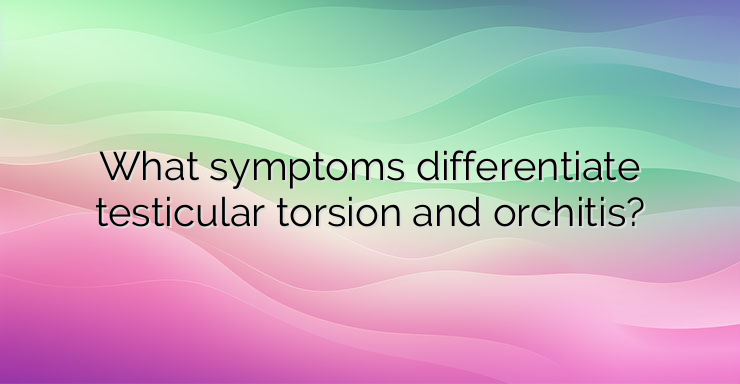Torsion of the testicle (testicular torsion) is a painful condition affecting the testicle, which is caused by twisting of the spermatic cord, causing the blood supply to the testicle to be obstructed. Testicular torsion requires urgent surgical intervention as this condition is the most common cause of testicular loss in adolescent males. Infection of the testicles (orchitis) is usually caused by bacteria or viruses. Infections of the testicles can spread to structures that are near the testicles, such as the epididymis (epididymorchitis). Testicular torsion is characterized by severe testicular pain in one testicle; in contrast, there are different types of testicular infections depending on the pathogen (different bacteria and viruses), the characteristics of which may vary. Most testicular infections are also treatable but do not require surgery. Unlike the appearance of excruciating pain in the affected testicle during torsion, such a symptom is absent in orchitis. Infections usually present with swelling, redness, pain and tenderness of the testicles. Testicular torsion may also present with abdominal pain, fever, nausea, and vomiting. Other symptoms associated with testicular infections also share some of these symptoms, which include nausea, fever, fatigue, and pain (usually when urinating). A factor that increases a man’s risk of testicular torsion is an anatomical abnormality called a ball-clapper deformity, which allows the spermatic cord to twist more easily. Conversely, there are numerous known causes of testicular infections; eg mumps virus, coxsackie virus, sexually transmitted diseases (mainly bacterial such as Neisseria and/or Treponema), E. coli, Staphylococcus, Streptococcus and other types of bacteria. Treatment of testicular torsion requires surgical treatment – orchidopexy (the testicles are fixed and sutured into the scrotum to prevent further torsion) usually by a urologist. Treatment for testicular infections depends on the underlying cause of the infection (for example, infections caused by viruses are usually left untreated, while infections caused by bacteria are treated with appropriate antibiotics). However, both testicular torsion and testicular infections should be followed up by a doctor. The prognosis for testicular torsion is good with possible cures, depending on how quickly surgical treatment is performed. Like testicular torsion, testicular infections generally have a good prognosis or cure. However, a complication common to both problems is that both can cause a reduction in male fertility, particularly in patients with torsion who have had failed or delayed testicular surgery or none at all, resulting in to testicular loss. References: 1. Urology Care Foundation. Testicular Torsion: Symptoms, Diagnosis & Treatment 2. Medscape.Orchitis Differential Diagnoses 3. Sahel Medical Journal. Differentiating acute epididymitis from testicular torsion


Leave a Reply